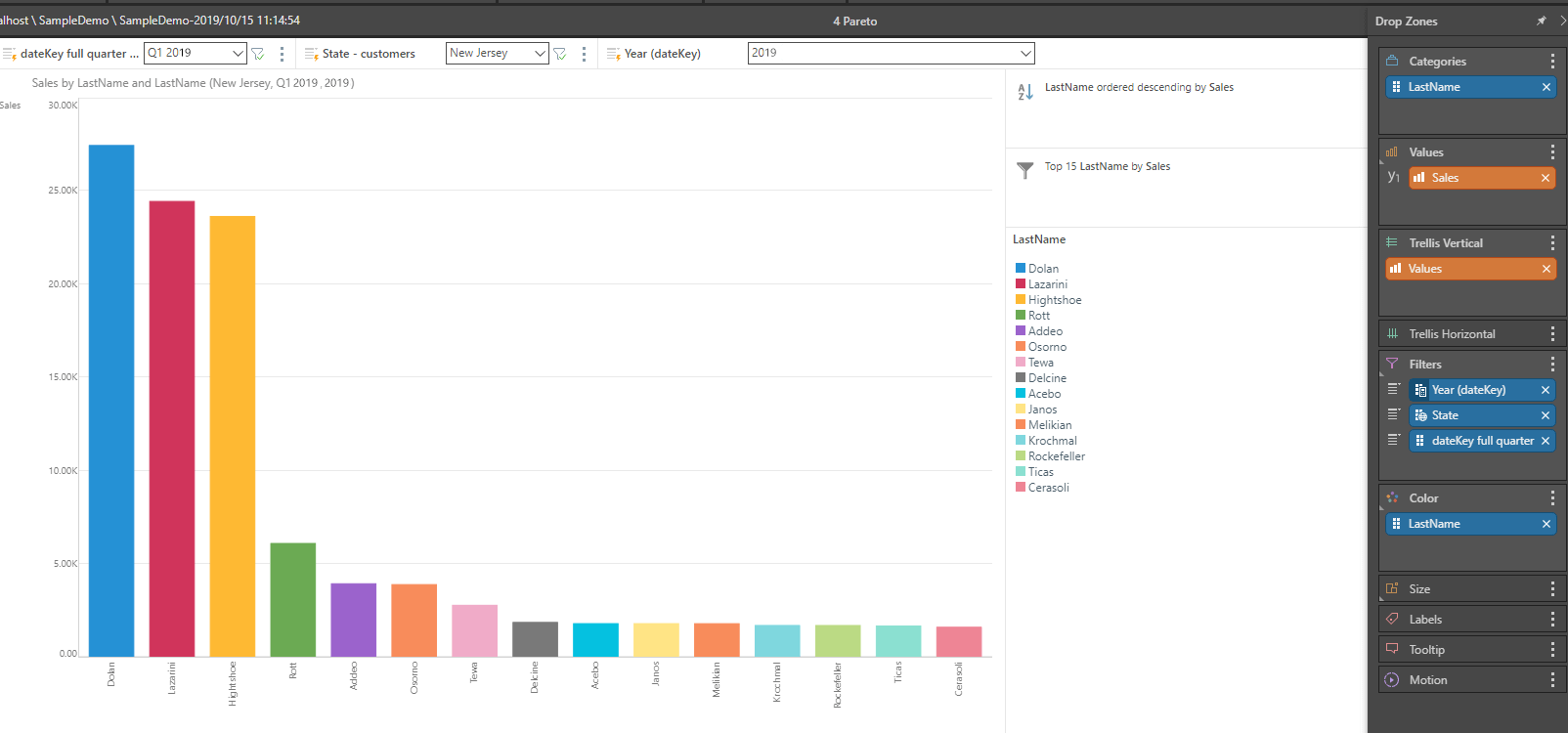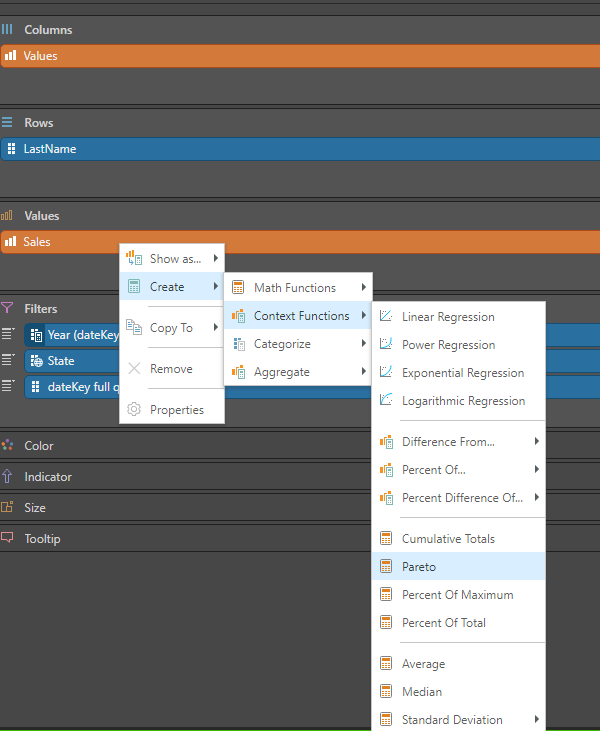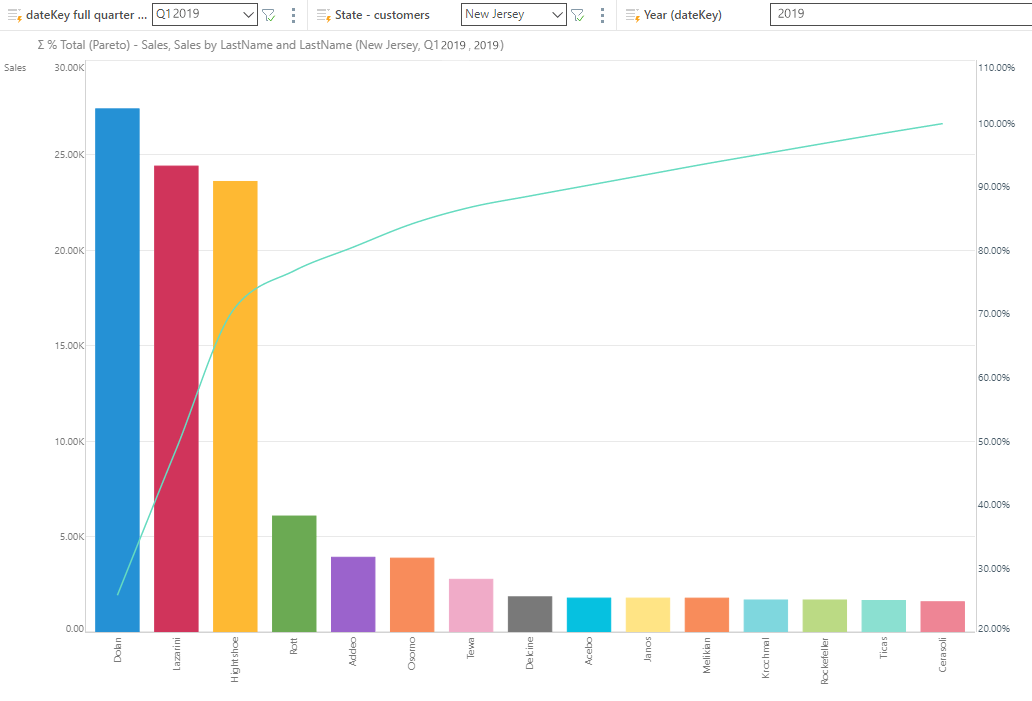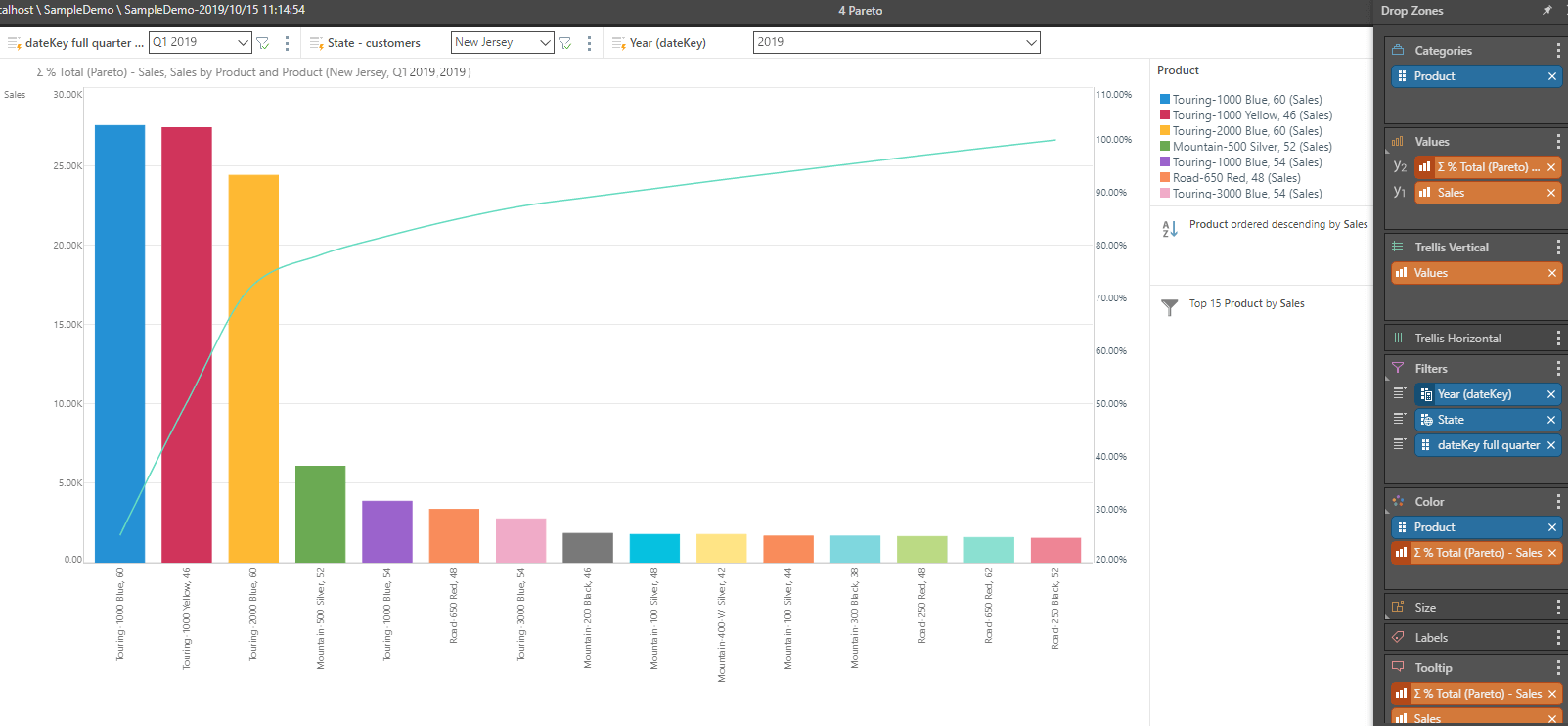In this second post on my three-part series on contextual calculations, I examine how Pyramid can quickly create business calculations like Pareto with just a few clicks.
An Italian economist by the name of Vilfredo Pareto observed that 80 percent of the land in Italy belonged to 20 percent of the population. In his research, he found that this rule applied in many diverse domains. Since then we have used his principle when trying to find patterns in our businesses and in our lives. With the explosion and availability of data and analytic capabilities we are now more capable and empowered to find more and more of these 80/20 nuggets that give us actionable insights.
Pareto implementation challenges
Most modern BI tools do not allow for easy, code-free methods of creating flexible calculations like running totals (see previous post). And like running totals, the Pareto analysis requires the calculation of cumulative percentages of totals. Such complexity and difficulty in implementing basic formulations make the delivery of comprehensive analytics challenging for most end-users.
To gauge such complexity, it’s worth looking at the steps needed to add Pareto in competing solutions:
In contrast, Pyramid offers a one-click solution to adding Pareto metrics to your analyses that will be usable in any visual.
Identifying your best customers: Pareto in one-click
Apex Cycles wants to identify their top customers that account for most of their sales for the current year. Furthermore, they would like to identify which products and branches contribute towards most of their sales. How can we use Pyramid to improve, simplify, and speed-up this analytical process?
First, we start by building a simple column chart of sales by customer.

Then, by simply right clicking on the Sales metric, we can instantly add a Pareto metric based on sales that automatically show cumulative sales as a percentage of the total.

For added clarity, we put this Pareto metric on the secondary axis as a spline chart. And the Pareto report is complete! Uncomplicated, intuitive, and entirely dynamic.

Reading from this report, we can see that the first five customers account for 80% of all sales.
Focus on products
Now if we want to complete the same analysis for products instead, we can simply swap out customers with product and instantly get the new analysis without any further manipulation or code.

Here, we can see that four products account for roughly 80% of sales.
Conclusion
With Pyramid the user can create a Pareto analysis that:
- Does not need any developer input
- Only requires a few clicks
- Can instantly re-use the same function even after changing other selections in the report
Pyramid is a highly versatile, powerful, code-free, and user-friendly tool for creating business calculations like Pareto.
















